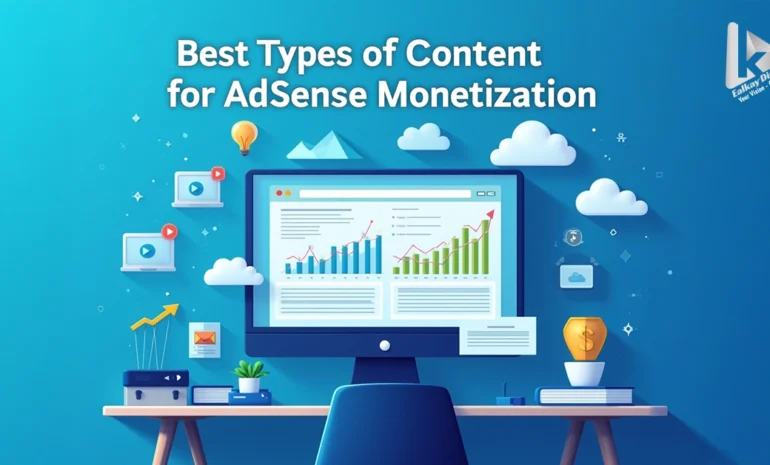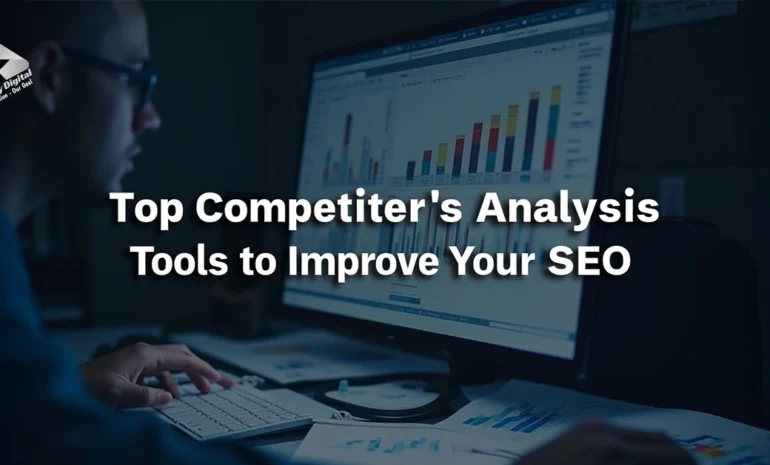Pay Per Click Marketing: Explained
In the vast landscape of digital marketing, (PPC) Pay Per Click Marketing is a powerful and cost-effective method to drive traffic to websites. Video ads are a versatile advertising format that can be used in PPC strategies across various online platforms such as YouTube, LinkedIn, and Instagram. Whether you’re a small business owner or a digital enthusiast, understanding the intricacies of PPC can make a significant difference in your advertising success. Especially for B2B marketing, leveraging PPC strategies can lead to more effective audience targeting and higher conversion rates. If you’re seeking expert assistance, consulting with a digital marketing company or the best PPC service provider in Hyderabad can provide valuable insights and professional guidance. This guide will walk you through the basics of PPC marketing, helping you get started on your journey to harness its potential.
What is PPC?
PPC, or Pay-Per-Click, is an online advertising model where advertisers pay a fee each time their ad is clicked. Essentially, it’s a way of buying visits to your site, rather than trying to earn those visits organically. In this model, the advertiser pays based on specific actions, such as clicks or impressions. Search engines, social media platforms, and other digital networks offer PPC advertising opportunities to businesses looking to expand their reach and visibility.
Search engine marketing (SEM) plays a crucial role in driving targeted traffic through paid advertising on the search engine results page (SERP). By optimizing PPC landing pages and utilizing effective ad platforms, businesses can enhance their online visibility, increase conversions, and achieve better results compared to relying solely on search engine optimization (SEO) efforts.
How Does PPC Work?
Conducting Thorough Keyword Research for Successful Campaigns
PPC campaigns begin with thorough research to identify the keywords potential customers are using to search for your products or services. Tools like Google Keyword Planner or SEMrush can aid in discovering relevant keywords with high search volume and low competition, ensuring more effective targeting. It’s crucial to employ the best SEO services for keyword research, as expert SEO providers can optimize your strategy significantly. A digital marketing service provider can also be instrumental in guiding this process, ensuring that your PPC campaign reaches its full potential. Effective keyword research is essential to create campaigns that are tailored to specific demographics, interests, and locations.
Crafting Compelling Advertisements for Maximum Engagement
Craft compelling ad copy that aligns with your chosen keywords by engaging a social media service provider. Effective ads typically feature a catchy headline, a brief description, and a strong call-to-action. Image ads are another effective ad format, especially for display ads within networks like the Google Display Network, aimed at increasing brand awareness and retargeting potential customers. For B2B marketing, it’s essential to integrate best strategies for B2B marketing to ensure a higher conversion rate. Ads are usually composed of text, as in Google search ads, but can also include images or videos, especially when utilizing social media marketing services. To enhance your campaign, consider partnering with Ealkay, recognized as the best digital marketing company for implementing innovative social media marketing strategies.
Optimizing Bidding Strategies and Efficiently Managing Your Advertising Budget
PPC platforms operate on an auction system where you bid on specific keywords, and your bid represents the maximum amount you’re willing to pay for a click on your ad. Setting up and optimizing a Google Ads account is crucial for managing your pay-per-click advertising effectively. It’s essential to implement effective bidding strategies aligned with your business objectives to ensure optimal results. Setting daily or monthly budgets helps control your ad spend and maintain a focus on budget strategies without overspending. When targeting a B2B audience, understanding the dynamics of digital marketing and social media marketing can enhance your reach and effectiveness. Keeping your target audience in mind will make your campaigns more successful in achieving your goals.
Strategic Ad Placement: How to Maximize Visibility and Engagement in Your Campaigns
Your ads are placed in the search engine results pages (SERPs) or on other digital platforms, enhancing your online presence. The position of your ad is determined by a combination of your bid amount and your ad’s quality score. Understanding user behaviors and the dynamics of social media marketing can give your social ads an edge in competitive markets. For B2B companies, tailoring your marketing efforts to align with your target market is essential for effective marketing campaigns. This approach ensures that your ads reach the right audience, maximizing impact and efficiency in a competitive landscape.
Continuous Monitoring and Strategic Optimization for Maximized Results
Regularly review campaign performance using analytics tools to ensure business success, especially when managing PPC ads. Monitor metrics such as click-through rate (CTR), conversion rate, and return on ad spend (ROAS). Within your social media strategy, optimize your campaigns by adjusting bids, refining ad copy, and targeting more specific keywords to improve performance. Prioritizing user engagement and adapting to the business environment can help in building a strong brand identity.
PPC Advertising Platforms: Choosing the Right Fit for Your Business
Choosing the right PPC advertising platform is crucial for the success of your campaigns. The platform you select should align with your target audience, preferred ad formats, and budget. Google Ads is the most popular PPC platform, offering a wide range of ad formats and targeting options. Its extensive reach and robust features make it a go-to choice for many businesses.
However, don’t overlook alternatives like Bing Ads and Microsoft Advertising. These platforms can provide cost-effective solutions and access to a different segment of the market. Social media platforms such as Facebook, Instagram, and LinkedIn also offer PPC advertising options with advanced targeting capabilities, allowing you to reach specific demographics and interests.
For businesses looking to leverage video content, YouTube Ads and other video advertising platforms can be highly effective. When choosing a platform, consider its user interface, reporting features, and customer support. It’s essential to select a platform that aligns with your business goals and target audience. Each platform has unique features, such as Google Ads’ Quality Score and Facebook Ads’ interest-based targeting, which can significantly impact your campaign’s success.
Measuring PPC Performance: Key Metrics and Tools
To measure the performance of your PPC campaigns, it’s essential to track key metrics such as cost per click (CPC), conversion rate, and return on ad spend (ROAS). Google Ads and other platforms provide built-in reporting tools that help you monitor your campaign’s performance. Additionally, tools like Google Analytics can track website traffic, conversions, and revenue generated from PPC campaigns.
Monitoring your ad’s click-through rate (CTR), ad position, and impression share is crucial for optimizing your ad placement. Utilize A/B testing and experimentation to identify the most effective ad copy, targeting, and bidding strategies. Regularly reviewing your campaign’s performance data allows you to make informed decisions and optimize your PPC strategy.
Consider using third-party tools like SEMrush or Ahrefs to gain additional insights and optimize your PPC campaigns. Setting up conversion tracking is also vital to measure the effectiveness of your campaigns and make data-driven decisions.
Common PPC Mistakes and How to Avoid Them
One of the most common PPC mistakes is not conducting thorough keyword research, leading to irrelevant ad placements. Avoid using broad keywords with high competition and instead opt for long-tail keywords with lower competition. Not setting a clear budget and bidding strategy can lead to overspending and poor ad performance.
Failing to optimize landing pages for conversions can result in a low conversion rate and wasted ad spend. Not monitoring and adjusting ad campaigns regularly can lead to stagnant performance and missed opportunities. Using low-quality ad copy and images can negatively impact ad performance and click-through rates.
Not utilizing negative keywords and ad extensions can lead to irrelevant ad placements and poor ad performance. Regularly review your campaign’s performance data to identify areas for improvement and avoid common PPC mistakes.
PPC Best Practices for Effective Campaigns
Conducting thorough keyword research is the foundation of any successful PPC campaign. Identify relevant and high-performing keywords that resonate with your target audience. Create compelling ad copy and images that capture attention and drive engagement.
Optimizing landing pages for conversions is crucial. Ensure a seamless user experience that encourages visitors to take the desired action. Set clear budget and bidding strategies to ensure efficient ad spend and maximize your return on investment.
Utilize ad extensions and negative keywords to improve ad relevance and performance. Regularly monitor and adjust your ad campaigns to ensure optimal performance. Use A/B testing and experimentation to identify the most effective ad strategies.
Consider using PPC automation tools to streamline campaign management and optimization. These tools can save time and help you focus on strategic decision-making.
Advantages of PPC Marketing ads
Immediate Results: Unlike SEO strategies for B2B marketing, which can take months to see results, PPC can drive traffic to your website immediately after launch. This approach is particularly advantageous when targeting a professional audience, as it allows a well-established brand to quickly engage potential clients. By incorporating an effective B2B brand strategy, companies can ensure their message resonates and captures the interest of their target market right from the start.
Meta ads are particularly effective for social media marketing on platforms like Facebook and Instagram, offering robust targeting options and various ad formats to efficiently reach specific audiences.
Targeted Reach: PPC offers targeted reach by enabling precise targeting based on demographics, location, device type, and more. This level of granularity ensures your digital marketing strategies effectively reach the desired audience, enhancing the efficiency of your marketing collateral. Such precision is invaluable in tailoring campaigns that resonate with specific B2B decision-makers and niches.
Measurable ROI: With detailed analytics, you can measure the success of your campaigns and make data-driven decisions. By gaining actionable insights, you can identify the biggest factors contributing to your performance. Moreover, integrating these findings into your social media strategy allows you to enhance campaign effectiveness and better target your audience.
Flexibility: Easily adjust campaigns, pause ads, or scale up successful strategies in real-time by incorporating approval workflows and collaborating with creative service partners. When dealing with active users, having a B2B marketing plan and access to marketing data becomes crucial. This ensures your digital marketing plan is effectively aligned with business goals, allowing you to adapt quickly and make data-driven decisions for optimal results.
Getting Started with PPC
Choose Your Platform: Start with Google Ads if you’re targeting search engine traffic, or consider Facebook Ads for reaching a broader audience on social media. Set Clear Goals: Define what you want to achieve with your PPC advertising campaigns. Goals could range from increasing website traffic to boosting sales or generating leads. Learn and Experiment: Familiarize yourself with PPC tools and terminology. Don’t hesitate to experiment with different strategies to see what works best for your business.
By understanding the basics of PPC, integrating digital marketing services, and employing a robust social media strategy, you’ll be better equipped to leverage this powerful marketing tool to drive valuable traffic to your website and achieve your business goals. Partnering with a reliable PPC service provider can further enhance your campaigns by offering expert insights and management. As with any marketing strategy, continuous learning and adaptation are key to long-term success in PPC marketing.
PPC Tools and Software: Enhancing Your Campaigns
Top PPC advertising platforms like Google Ads platform and LinkedIn Ads play a vital role in successful PPC advertising. Understanding how PPC advertising work enables advertisers to create targeted ad campaigns that maximize ROI. Leveraging these platforms effectively can boost your online marketing efforts and drive quality traffic to your business.
Google Ads offers a range of tools and features to help you manage and optimize your PPC campaigns. Third-party tools like SEMrush, Ahrefs, and AdEspresso can provide additional insights and optimization capabilities. Consider using PPC automation tools like WordStream or Optmyzr to streamline campaign management and optimization.
Utilize landing page builders like Unbounce or Instapage to create high-converting landing pages. Social media management tools like Hootsuite or Sprout Social can help you manage your social media ads and campaigns effectively.
Consider using call tracking and conversion tracking tools to measure the effectiveness of your PPC campaigns. Data analytics tools like Google Analytics or Mixpanel can provide deeper insights into your campaign’s performance.
Stay up-to-date with the latest PPC trends and best practices by attending industry events and conferences. Continuous learning and adaptation are key to long-term success in PPC marketing.
Conclusion: Elevate Your PPC Marketing with Ealkay Digital
Utilizing Ealkay Digital’s expertise can significantly enhance your PPC marketing efforts. By leveraging their advanced strategies and insights, you can optimize your campaigns for better reach and conversion rates. Ealkay Digital provides tailored solutions that adapt to your business needs, ensuring that your marketing goals align with your overall business objectives. This partnership empowers you to stay ahead of the competition and achieve measurable success in the digital landscape. Additionally, consider the Microsoft Advertising Network as an alternative PPC platform to extend your ad reach beyond Google with diverse ad formats.








